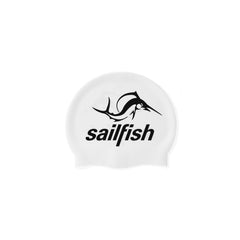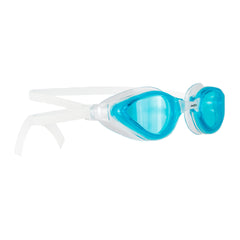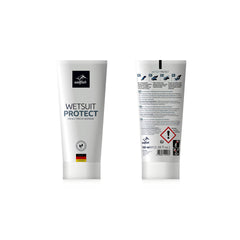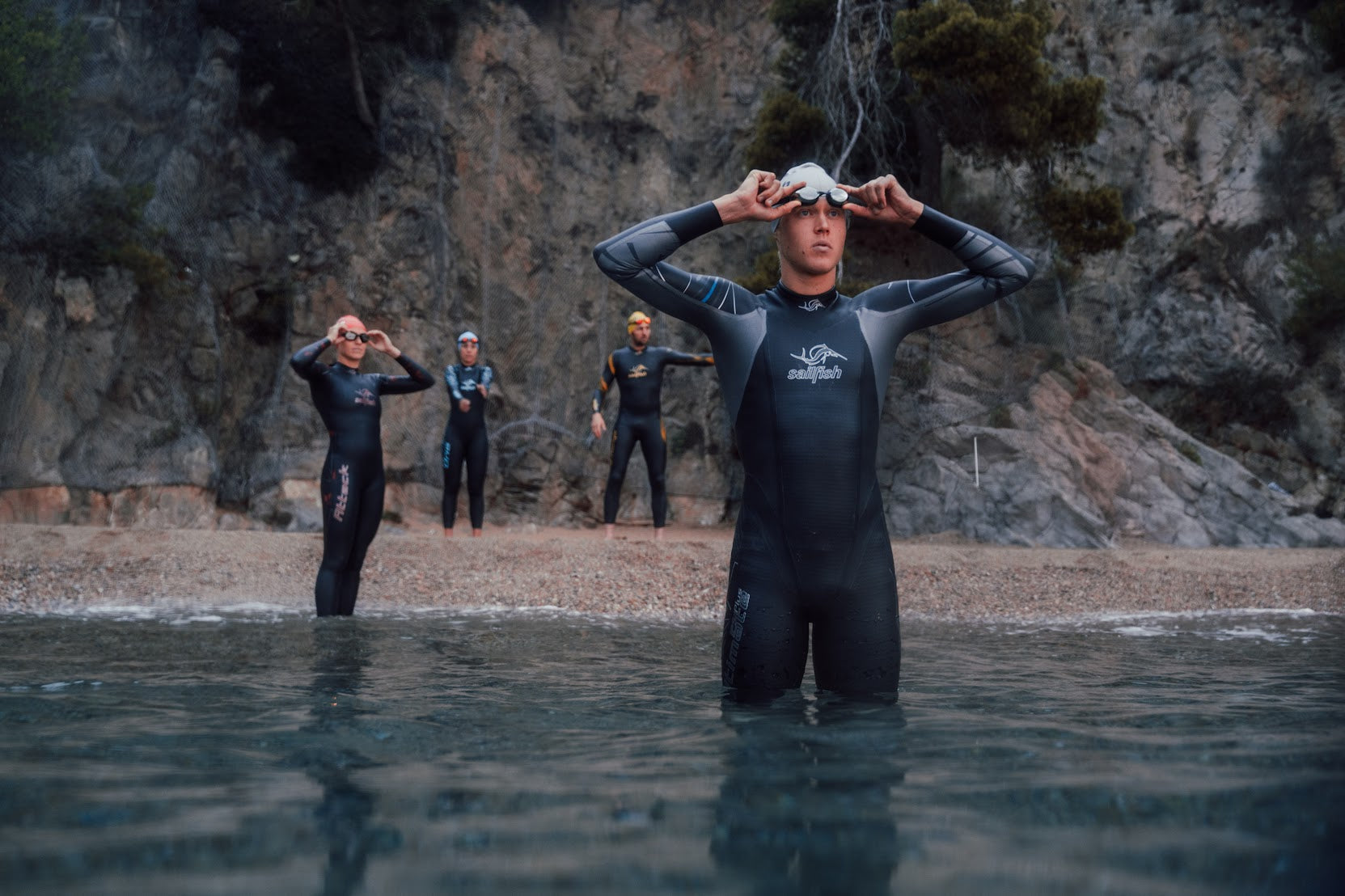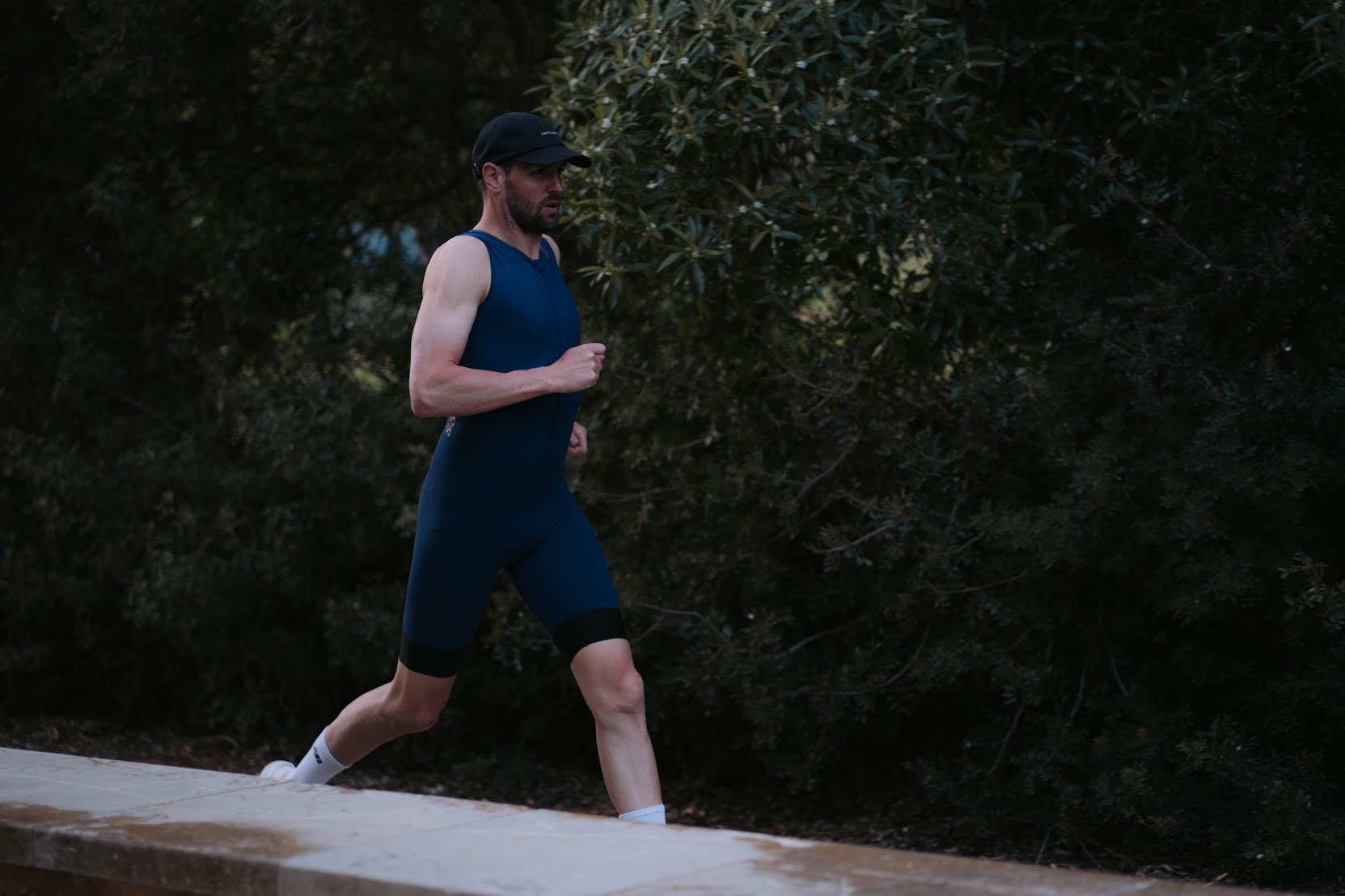For beginners and experienced triathletes alike, swimming in open water can be a challenge in itself. But what makes open water swimming so special? What do you need to keep in mind? Enclosed you will find some helpful tips for your open water training!
Tips for your safety
- Familiarize yourself with the environment and conditions as much as possible.
- Wear a colorful swim cap for better visibility (for people from the shore and other people in the water).
- If you are alone, swim only in open water that you know and near the shore so you have a chance to take a break
- For your own safety, bring a floating buoy and pull it behind you
- Make sure you have the proper gear that can protect you from cold water (neoprene cap, gloves, socks)
- Open water is often wide, don't overestimate the distance and listen to your body.
- Do not go swimming if you feel uncomfortable
- Deposit a water bottle on the shore (especially if you swim in the ocean, your mouth gets very dry)
- Take a spare pair of glasses and/or contact lenses with you
- Last but not least remove your jewelry (especially rings), hands shrink in cooler temperatures
Tips for training - General
- It is important to continuously work on and improve your breathing technique so that you can persevere and swim longer and longer sections effortlessly.
- To keep a constant pace, good technique and endurance are essential.
- Practice all open water techniques (swimming straight ahead, looking up and orienting yourself, breathing) as often as possible. This should be a regular part of your normal training.
- Continue training in bad weather conditions (except thunderstorms!) to get used to it (competitions are not all sunshine).
- Before going into the water, warm up your arms with a Thera-Band for example.
Tips for training - breathing
- 4 x 50m: focus on your breathing, make sure your head is in the water (all air bubbles out) when you exhale and turn your head to the side when you inhale.
- 5 x 200m: breathing on both sides, every 3 / 5 breaths
- 15min unilateral breathing without touching the end of the pool (training in the pool)
Tips for training - orientation
- When swimming in open water, look for a clear landmark on the shore and try to swim straight towards it.
- Water polo freestyle (look forward and head out of the water), breathing calmly to the side. Intervals like 200m freestyle, 50m of which is water polo freestyle, or every 3 / 5 strokes look up and forward.
- Head-up freestyle to try to focus on something at the end of the pool / buoy in the lake
- Close your eyes and swim 5-10 strokes. If you have a tendency to lean to one side, work on correcting it.
Tips for training - swimming in a group / in a crowd
- Hand on foot of the person swimming ahead
- Actively practice the swim shadow swim
- Each person has to swim in the front in turn and give the direction, the others try to follow him/her
Tips for training - swimming with a partner
- Simulation of a competition situation: pulling on the legs, diving under water, swimming over it
Tips for training - technique and pace
- change of pace, 5 x 30 strokes sprint, 100m easy, repetition
- Use of different techniques to diversify your training (swimming with paddles, tee-off, turns, etc.)
- Swim with kickboard, 5 x 100m legs

